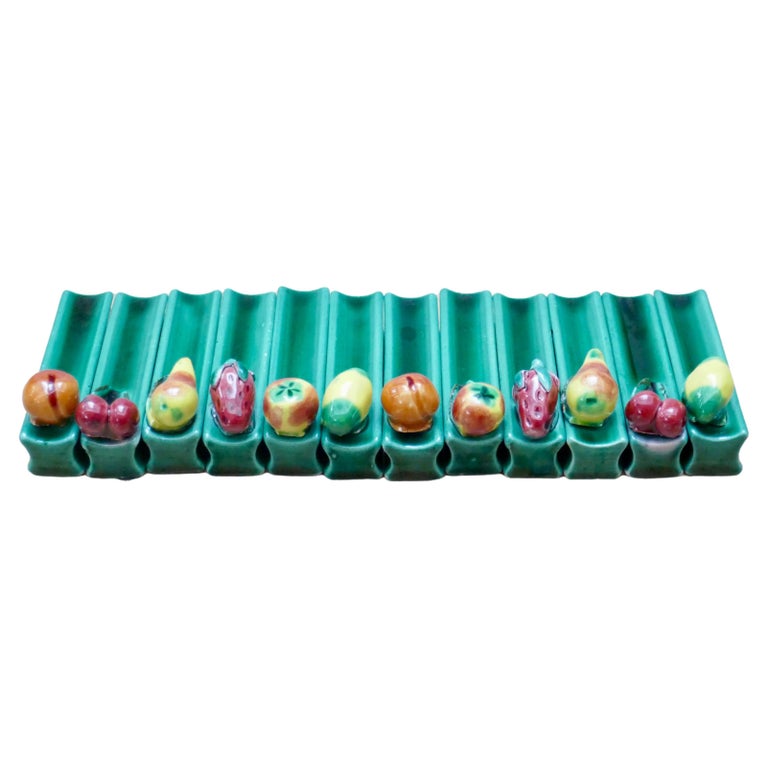
Set of Twelve Majolica Vegetables Knife Rests Vallauris, circa 1950
The original pottery of Vallauris is traditional culinary ceramics likely created during the Roman era thanks to nearby clay deposits.
From the 16th-century, Italian families from Genoa settled in the city after a deadly epidemic. This timeframe is the beginning of pottery activity by individual artisans.
In the 17th-century, the pottery craft activity developed further becoming a significant economic driver of the city. The pottery tradition of Vallauris that continues today is born at this time.
In the 19th-century, the advent of the railway helped the potters to organise commercial enterprises. They worked in large factories and exported their production. Utensils and kitchen containers become the specialty of Vallauris.
However, 20th-century modernisation brings with it a decline in artisanal pottery activity in Vallauris. After WWII, Picasso gives a new impetus to the pottery of Vallauris when he chooses to settle in the city. Like a magnet, the presence of Picasso draws the arrival of artists like Jean Marais and many others.
Vallauris became fashionable in the years 1950-60 and ceramics developed as an art form. The trend towards ceramics as art was prompted by the Massier brothers Clément and Delphin and cousin Jérôme in the late 1800s. Since that time the craft continues but overall with decorative ceramics and tableware.
Set of 12 green knife rests with vegetables.
Vallauris, 1950s.
Dimensions
Height: 0.79 in (2 cm)
Width: 3.55 in (9 cm)
Depth: 0.79 in (2 cm)
Style
Mid-Century Modern
Materials and Techniques
Ceramic
Place of Origin
France
Period
1950-1959
Request info




